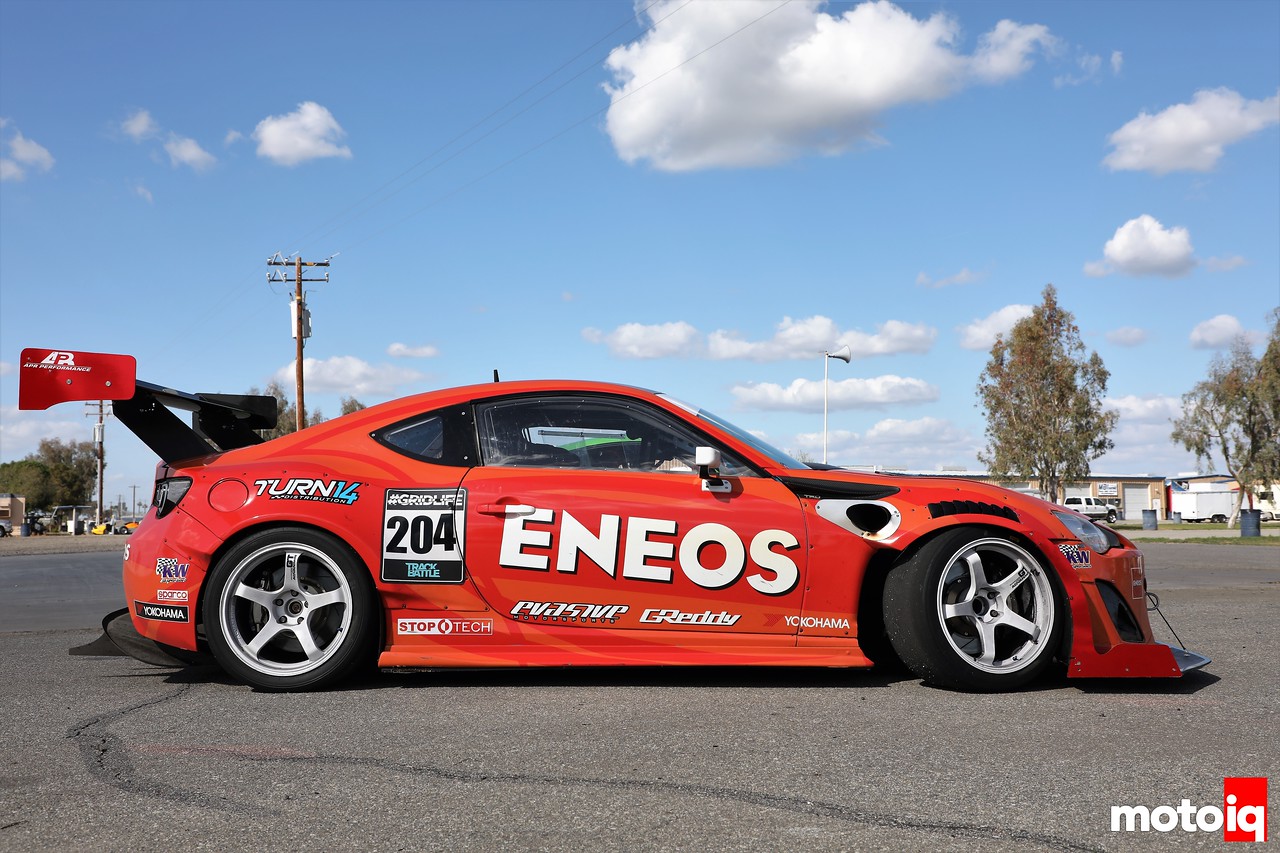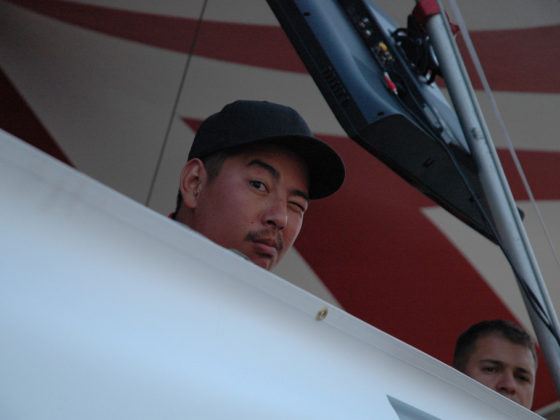
To control the boost, a big Turbosmart 60mm Powergate wastegate bleeds exhaust pressure from both sides of the ETS twin scroll exhaust manifold.

A short 4″ stainless exhaust goes straight from the V-Band turbo outlet to the side of the car. You can’t get any lighter or simpler than that.

The exhaust is channeled to the fender through this nicely sculpted discharge outlet. An aluminum shield protects the fiberglass bodywork.

The crankcase and head are generously vented to this large, high volume air oil separator tank. The tank drains oil back to the crankcase and blowby gas is routed to an external catch can.

A Canton Racing Products Accusump helps protect the engine under high G-force cornering where even the large capacity, deep sump and baffled Greddy oil pan might suck air. This is about as cool as you can get with a wet sump system.

Thin air at high altitudes cools very poorly so a huge oil cooler must be run to help control oil temperatures.




8 comments
Great build and write up. One small note is that the vertical strakes on a diffuser limit spanwise flow. Without them, the air will tend to move laterally across the diffuser surface. Obviously, that reduces the effectiveness of the diffuser. Of course, there’s a small drag penalty, but it’s more than made up for in the aero efficiency.
Fun fact: These strakes were first developed for the swept wing jet fighter aircraft. Because the ailerons are generally located near the wingtips (for the maximum moment arm) the control surface on swept wings was losing ability due to boundary layer separation. This was because the swept wing caused the air to turn outward (spanwise flow.) By introducing a wing fence (vertical strake projecting above boundary layer) you limit spanwise flow and the aileron remains effective, so even under extreme yaw angles.
We did it mostly to try to keep the flow attached with a less than optimal angle. We used a pre-made diffuser to expedite stuff. We might redo it later if there is time and money.
Yeah, it’s difficult to know if the flow is staying attached or separating. Obviously, you can’t use wool tufts, because gravity.
Maybe you could make your own ‘flowviz’ paint, but I think that gravity would make that difficult, too.
Not many good options without a wind tunnel. And no reason to spend $$$ unless you know it’s going to work.
Also, the front end should always see the bulk of the aero effort. If the front isn’t working properly, then it won’t matter what you do at the rear. The flow will be turbulent by then, anyway.
Best of luck on Pikes Peak.
page 5 pic 1
it looks like there’s what looks like a delrin bushing on the knuckle between where the tie rod and LCA connect to it. From what I can tell its between 2 rigid non-moving parts… and its not in the pics of the kit on the Wisefab website… whats its purpose?
It’s a steering stop.
oh i see, that makes sense…
I was low key hoping to see a double wishbone conversion similar to what the HKS time attack car did
Not legal for our events!
that makes sense… I didn’t really consider that